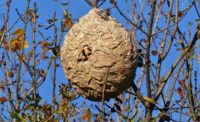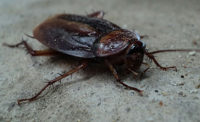Rodent Control in the Food Plant

You’ve likely seen the news reports over the last year that rats are increasing due to COVID. Conditions have changed with restaurant closures, businesses being shut down, and more people working from home. While food processing and storage facilities haven’t experienced those same shut downs, rodent pressure has been higher at your site, and likely will continue to be higher in the near future.
Rodents moved to your site from other areas. Nearby areas that had plenty of food resources for them like restaurants, hotels, and more urban areas had foods and food waste dry up. Rodents like rats and mice moved to areas with more food resources. That means food processing, food storage, and more suburban and residential areas. Like all living things, rodents need food, water, and shelter. When their food sources are reduced in one area (no more loaded urban dumpsters), they search for other areas. With more rodents on the outside, the chance of them getting inside (where all the good food and shelter is) increases. That increases the chance of damage from rodent feeding and gnawing as well as the risk of contamination from feces, urine, and the diseases rodents can carry.
Most sites have a third-party contractor providing pest control services. They should have put measures in place to mitigate this and they should be monitoring the issue and responding. Check with your provider and ask if they have seen an increase in rodent activity and what measures they are putting in place to mitigate that.
There are also things you can do to further reduce the risk of these dastardly devils causing destruction and disaster.
Shut the doors. Sure, you have to have people come and go and dock doors must open and close to let product flow. Doors have to open and close but they don’t need to remain open once a person has gone through or a truck has left the dock. Install doors that close automatically. Make sure they close at a reasonable speed: you don’t want a door to take three minutes to close behind a person! Check for doors that are propped open and ensure employees understand why they can’t do that.
Seal the doors. Once you have shut the doors, make sure they close properly. A door that doesn’t latch or doesn’t quite come down to the ground can let rodents in. The general rule is mice can get in through an opening the size of a dime, rats need an opening about the size of a quarter. Get down low (really, kneel down!) to see if doors are adequately sealing the entire area below the door. If you can see daylight, it needs to be fixed.
Clean up the food. Easier said than done because you are processing and storing foods. You can’t possibly clean up all the food. However, the less that is available on the floors, in trash bins, or overflowing dumpsters, the more rodents will have easy access. You should have a sanitation schedule: Now’s a great time to take a second look. Is it still adequate? The goal with sanitation isn’t always to completely remove, but instead to minimize and contain what you can. It’s a lot harder for a rat to get into your processing line to eat the food there than it is for that rat to eat the spilled product on the floor. Remember employee areas as well, there is often plenty of food resources in breakrooms and sometimes office areas.
Check the outside. Rodent issues generally start on the outside: There is habitat, food, and water. By minimizing how attractive and appetizing the outside it, you can reduce the chances of the rodents gaining entry and causing much bigger problems. Look for overgrown areas where rodents like to burrow. Check to make sure the vegetation-free border around the site still is vegetation free. Inspect for sanitation issues around dumpsters and any outdoor employee areas.
Your pest management company should be reporting when they see conducive conditions like entry points, sanitation issues, and outdoor problems. You can be looking for them too. Once you see something or something is reported, fix it as quickly as possible. The more you can prevent rodent issues, the safer your product will be. Don’t let rodents contaminate!
Chelle Hartzer, M.Sc., BCE, is a consulting entomologist at 360 Pest and Food Safety Consulting and has been helping clients solve complicated pest issues for over a decade. Chelle holds an M.Sc. in entomology from Kansas State University and is a board-certified entomologist (BCE) in urban and structural entomology. She is also a Preventive Controls Qualified Individual and earned her Lean Six Sigma Green Belt.
Looking for a reprint of this article?
From high-res PDFs to custom plaques, order your copy today!






.webp?t=1721343192)

